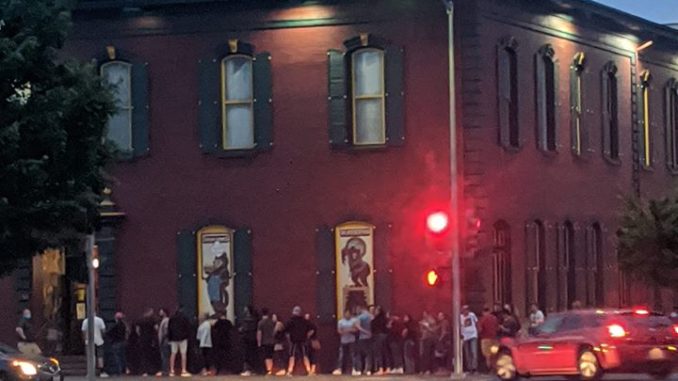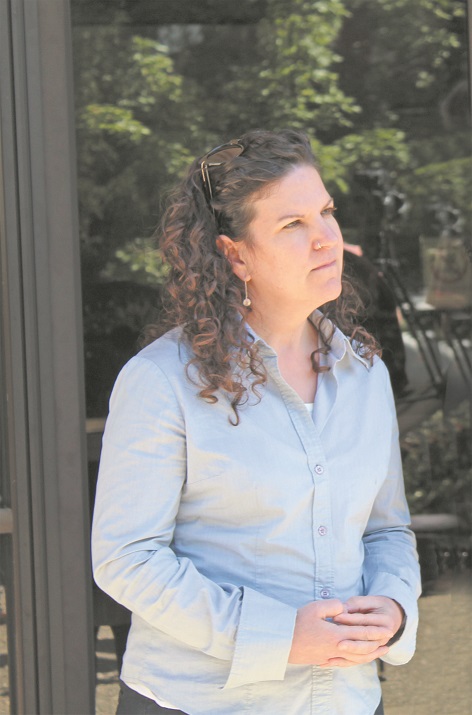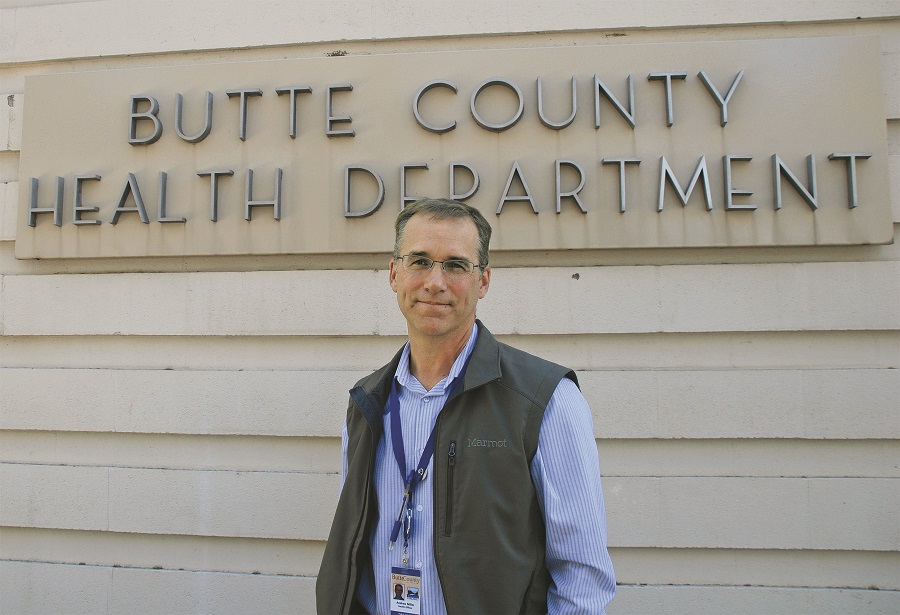
When Butte County became one of the first two California counties permitted to advance further in reopening businesses, Tami Ritter had a muted reaction.
Ritter, a county supervisor representing Chico, served on a committee of elected officials and top administrators from each jurisdiction—municipalities and the county government—that signed off on a locally focused plan to reopen safely amid the coronavirus outbreak, guided by health information.
Once state officials on Tuesday (May 12) approved an attestation from Butte County Public Health, affirming the low incidence of COVID-19 locally, the county rolled out its plan based on input from health and business leaders. Public Health posted the complete document and summarized it on a dedicated web page, Butte Reopens.
“In terms of the task force and the committee that assembled,” Ritter told the CN&R, “I am probably one of the less comfortable individuals with us opening.”
Also incorporating the state’s Resilience Roadmap for coronavirus recovery efforts, Butte County’s plan specifies how, when and which businesses reopen. For instance, restaurants—previously limited to takeout—could open to diners Tuesday provided they take precautions regarding table spacing and other measures to minimize risks of spreading coronavirus. Offices, manufacturing and retail could open last Friday (May 9) under a statewide order, then got additional latitude locally. Bars, entertainment venues and other large gathering halls, along with salons, remain on the closed list.
Even though Ritter had a seat at the table—metaphorically, since meetings are virtual during the pandemic—she has serious reservations about the plan.
Its success hinges on compliance, yet neither the county nor municipalities have enforcement authority for plan provisions. Moreover, the measure of its success rests on health indicators that are defined by words, such as “significantly decreasing,” rather than numbers, such as percentages of change.

In addition, Ritter told the CN&R that Dr. Andy Miller, the county’s public health officer, has tendered his resignation and will work through June. Miller is one of the three Public Health Department officials assessing coronavirus indicators and the person authorized to declare a public health emergency, among other decisions. (Miller and Public Health did not comment by publication.)
“I hear every single day from constituents who are concerned about businesses or other places that aren’t doing what they’re supposed to do,” Ritter said by phone this morning (May 15). “The fact that this is a self-certifying process is my biggest concern.
“I think each business wants a clear-cut guide of how to open responsibly. Unfortunately, we can’t give it to them. It does not exist on the state level, and what we do have on the local level has been created by those very same industries.”
While noting “it makes sense” to consult those who know their own operations, Ritter said the plan allows businesses to determine for themselves that they adhere to the requirements, and that “self-certifying process removes any oversight from [a] city or the county.”
Chico City Manager Mark Orme confirmed that local jurisdictions lack compliance authority for plan provisions. He also confirmed, as Ritter told the CN&R, that this was the case before the plan. While code enforcement officers visited businesses that opened contrary to Gov. Gavin Newsom’s stay-home orders, and police technically could cite violators, the onus of enforcement falls on the state.
That’s begun to happen: The California Department of Alcoholic Beverage Control, for example, has come after establishments defying closure orders. Businesses such as tattoo parlors and barbershops also get licensed by state agencies.
“We’re going to continue to educate those businesses and make sure they’re aware of those potential implications,” Orme said by phone this afternoon. “The only thing that has changed is we have seen that the state is starting to engage more, which is probably a harbinger that these businesses need to be made aware of.”
Hard numbers
Butte County’s plan for reopening came down to its attestation, which came down to science. The team that assembled the assessment comprises Miller; Danette York, the county’s public health director; Dr. Linda Lewis, the county’s public health scientist and epidemiologist; and the CEOs of the county’s three hospitals—Enloe Medical Center, Oroville Hospital and Orchard Hospital in Gridley.
At the time, last Thursday (May 8), the county had two confirmed cases in the previous 14 days, for a total of 18 since the outbreak began. Four new cases have been confirmed since. Public Health, in a news release today, said one of the patients attended “a local, in-person religious service on Mother’s Day” attended by “over 180 people.”
Meanwhile, a photo circulating widely on Facebook last night and today shows a closely packed line wrapped around the downtown beer-and-burger joint Madison Bear Garden. The manager on duty this evening was not working Thursday and could not comment beyond saying the establishment is following protocols to keep occupancy low inside the building.

“The vast majority of people are being responsible,” Ritter said. “But for those who aren’t, they are putting everybody else at risk, and that’s my concern.”
York told the CN&R by phone Thursday afternoon that the health leaders’ panel developed local standards in conjunction with outside expertise, most notably scientific models from Johns Hopkins University and the global public health initiative Resolve to Save Lives. They developed two key charts: one with health indicators for loosening restrictions, one with health indicators for retightening restrictions.
The panel opted not to establish statistical standards, York explained, because of Butte County’s small number of cases and relatively small population, 219,000. A spike such as the past week’s—up from 18 cases to 22—“could be considered a significant increase because they had a number or a percentage in there previously.”
In adapting source materials, she added, “we changed some of that based on how this virus has affected Butte County. Part is population numbers; part of it is credit to our citizens who took the stay-at-home orders seriously and really helped flatten that curve by doing what they’re supposed to do.”
Ritter understands the rationale, the moving-target aspects of tracking this new disease. Still, she said, “if we’re going to use language that [essentially] states, If we’re going to have a surge, we’re going to have to reel this in, we have to have some kind of numbers, especially because this is a process that’s developed based on epidemiology and numbers.”
‘Fair and aware’
Further pinging Ritter’s radar, state officials decided to deactivate the federal medical station set up last month at the Enloe Rehabilitation Center. A FEMA-equipped site overseen by Butte County Public Health, the facility would have accommodated overflow from the hospital. Now, should an outbreak occur, the state will need to redeploy.
“We’re doing this at the exact same time that we’re [more widely] opening up,” Ritter said, “so the timing seems ill-conceived. How about we open, and then look in two weeks and see what the impacts are, since we know we have an approximate 14-day incubation period [for the virus]?”
Orme hears what the supervisor is saying. One of the city’s participants on the panel, along with Chico Mayor Ann Schwab, he also had a front-row seat as the plan coalesced over 10 days. He’s encouraged that many businesses in Chico seem to be taking time to take precautions before opening and, overall, finds the plan workable.
“I believe Butte County, in coordination with the five municipal agencies including Chico, has been very fair and very aware through this entire process,” he said. “They’ve been fair in that they’ve tried to find the best path forward for businesses to be able to reopen responsibly—and they’ve been very aware of the potential impacts of the potential spread of COVID-19 if businesses reopen too quick.
“I really believe there’s been a fine balance that’s been given to this, and it’s been really based on the medical professionals’ opinions.”
Said Ritter: “I have no reason to think that the criteria that are being established aren’t great criteria. But the driving force is about getting back to work, is about stimulating the economy, which is about creating jobs—which I absolutely support. If this is a public health emergency, then the primary concern needs to be public health and the way in which this disease spreads or doesn’t spread.”



Thanks Evan. Appreciate the information!
Thank you for the great article
Well written article based on authoritative sources. The expressed concerns about learning to live with a novel normal make sense to me. Thank you Evan!
If public services like kzfr and kcho can make it with bi-anual pledge drives and, public Grant’s, why can’t the Chico News and Review? Relevant to Chico